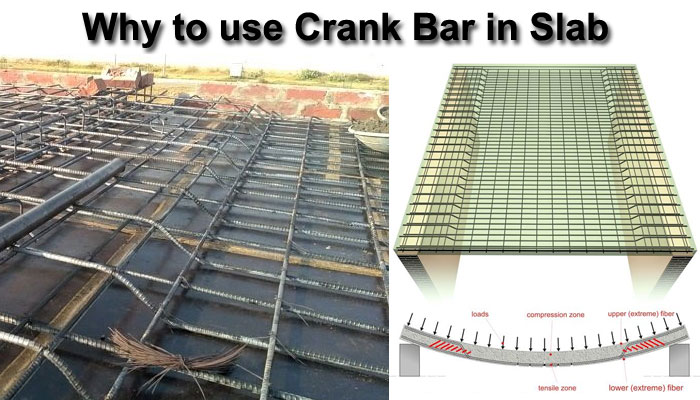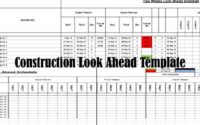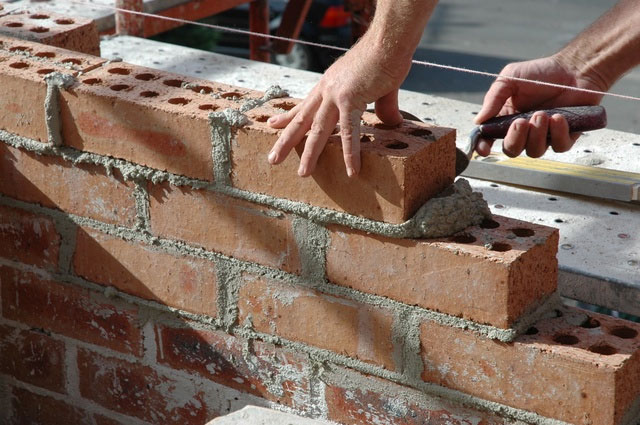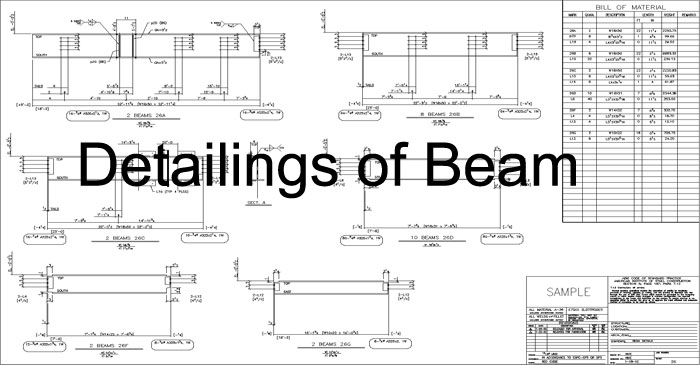Why use Crank Bars in Slab | Bent up Bars in Slab | Purpose of Crank Bars Uses
For slabs, the crank bar, also known as the bent up bar, is critical. It’s also necessary for putting together a bar-bending schedule. Let’s try to understand why to use crank bars / bent-up bars in the slab.
What Exactly Is Crank Bar?
Cranks bars of various shapes are included in the slab and other structural parts. Normally, bars are bent at a 45° angle near the supports. In shallow beams, the angle bent might also be 30°. (effective depth < 1.5 breadth).

You can see how the bent-up bars are provided in the slab in the image above. Two ends of the slab are supported.
The maximum tensile stress operating in the middle of the slab (sagging) and the maximum compressive stress acting at both ends of the support (hogging).
At the mid-span, bottom steel is necessary, whereas top steel resists negative moments at the supports. The RCC slab is protected from compressive forces by a crank bar. As these bars are present, the strength and deformation capacity of slabs with bent up bars is significantly boosted when compared to slabs without bent up bars.
Purpose of Crank Bar Uses
Crank bars are commonly used for a variety of purposes.
1. To withstand a bending moment that is negative (hogging).
2. To withstand increased shear forces at supports.
3. To lessen the danger of brittle slab-column connection failure.
4. To cut down on the amount of steel that is used.
5. In order to save money on materials.
Related Posts

Download Construction Look Ahead Schedule Template – Project Plan Template Sheet Download

Right Methods of Building with Bricks or Blocks

Detailing of Beams : Simply Supported, Continuous Rectangular and Cantilever Rectangular Beams
About The Author
John Steffen
I love to share my experience on civil engineering and construction estimates. As a highly capable individual with a strong academic background, I am proud to say that I already possess a comprehensive understanding of the technical elements of civil engineering.


